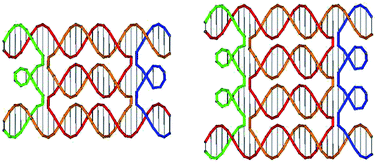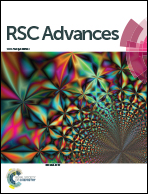Self-assembly of DNA double multi-arm junctions (DMaJs)
Abstract
This article develops a class of DNA nanomotifs: double multi-arm junction (DMaJ) nanomotifs or tiles. Each motif consists of two multi-arm, branched, DNA junctions (either 6- or 8-arm-junctions). In the DMaJ motifs, two, long, parallel, DNA duplexes allow the tiles to interact with each other to form large nanostructure frameworks. In addition, they contain extra helical domains that could provide easy anchors for additional functional/structural elements or opportunities for complex, inter-motif connectivity to construct complex DNA-based nanomaterials. We have thoroughly characterized the formation of the new motifs by polyacrylamide gel electrophoresis (PAGE) and their assembly behaviors by atomic force microscopy (AFM) imaging.


 Please wait while we load your content...
Please wait while we load your content...